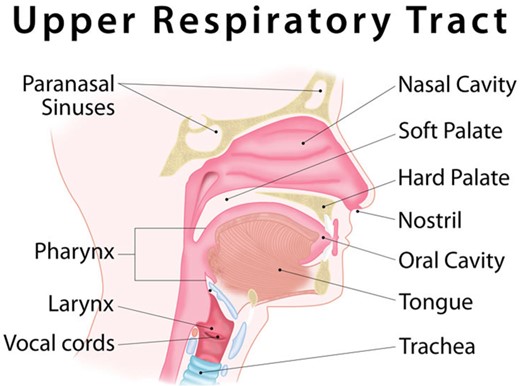A client returns to the clinic for follow-up treatment after a skin biopsy of a suspicious lesion performed 1 week ago. The biopsy report indicates that the lesion is a melanoma. The nurse understands that melanoma has which characteristics?
The lesion is asymmetrical and dark brown or black
The lesion has a high risk for metastasis
The skin around the lesion is warm and red
The lesion is in an area that is frequently exposed to sunlight
The lesion is painful
Correct Answer : A,B,D
Choice A Reason: This is correct because melanoma is a type of skin cancer that arises from melanocytes, which are cells that produce pigment. Melanoma lesions are often irregular in shape and color, and may have different shades of brown or black.
Choice B Reason: This is correct because melanoma is a very aggressive and invasive type of skin cancer that can spread quickly to other parts of the body through the blood or lymphatic system. Melanoma has a high mortality rate if not detected and treated early.
Choice C Reason: This is incorrect because warm and red skin around a lesion may indicate inflammation or infection, but not necessarily melanoma. Melanoma lesions may have other signs, such as bleeding, itching, or ulceration.
Choice D Reason: This is correct because melanoma is associated with exposure to ultraviolet (UV) radiation from sunlight or artificial sources, such as tanning beds. UV radiation can damage the DNA of melanocytes and cause them to grow abnormally.
Choice E Reason: This is incorrect because melanoma lesions are usually not painful unless they are ulcerated or infected. Pain may be a sign of other types of skin conditions, such as burns, blisters, or cuts.
Nursing Test Bank
Naxlex Comprehensive Predictor Exams
Related Questions
Correct Answer is A
Explanation
Choice A reason: This is the correct answer because this describes a stupor, which is a state of near-unconsciousness or reduced responsiveness. A stuporous client shows minimal movement and verbal responses and requires extreme vigorous stimulation such as painful stimuli to awaken briefly.
Choice B reason: This is incorrect because this describes obtundation, which is a state of reduced alertness or awareness. An obtunded client is extremely drowsy and minimally responsive and requires vigorous stimulation such as shaking or shouting to wake.
Choice C reason: This is incorrect because this describes lethargy, which is a state of decreased energy or activity. A lethargic client is alert and oriented x3 (to person, place, and time), but sluggish and drowsy, and wakes to voice or gentle shaking.
Choice D reason: This is incorrect because this describes a coma, which is a state of deep unconsciousness or unresponsiveness. A comatose client does not respond to verbal stimuli or speak and shows abnormal posturing in response to pain, such as decorticate (flexion of arms and extension of legs) or decerebrate (extension of arms and legs).
Correct Answer is C
Explanation
Choice A reason: This is incorrect because education about mastoidectomy is not relevant for a client with an upper respiratory infection. Mastoidectomy is a surgical procedure that removes part or all of the mastoid bone behind the ear, which can become infected or inflamed due to chronic or recurrent middle ear infections. The nurse should assess
the client's ear for signs of mastoiditis, such as swelling, tenderness, or redness behind the ear, but mastoidectomy is not a common or first-line treatment for upper respiratory infection.
Choice B reason: This is incorrect because a referral for a hearing test is not necessary for a client with an upper respiratory infection. Hearing test is a diagnostic tool that measures how well a person can hear different sounds at different frequencies and intensities. The nurse should ask the client about any changes in hearing or tinnitus, which are possible complications of upper respiratory infection, but a hearing test is not a routine or urgent intervention for this condition.
Choice C reason: This is correct because education on the administration of oral antibiotics can help treat an upper respiratory infection. Antibiotics are drugs that kill or inhibit bacteria that cause infections. Upper respiratory infections can be caused by various pathogens, such as viruses, bacteria, or fungi, but bacterial infections are more likely to cause fever, otalgia, or purulent nasal drainage. The nurse should instruct the client on how to take antibiotics as prescribed, such as dosage, frequency, duration, side effects, and interactions.
Choice D reason: This is incorrect because a prescription for an antifungal cream is not appropriate for a client with an upper respiratory infection. Antifungal cream is a topical medication that kills or inhibits fungi that cause skin infections. Upper respiratory infection is not a skin infection, but an infection of the nose, throat, or sinuses. Antifungal cream has no effect on upper respiratory infection and may cause adverse effects or resistance.

Whether you are a student looking to ace your exams or a practicing nurse seeking to enhance your expertise , our nursing education contents will empower you with the confidence and competence to make a difference in the lives of patients and become a respected leader in the healthcare field.
Visit Naxlex, invest in your future and unlock endless possibilities with our unparalleled nursing education contents today
Report Wrong Answer on the Current Question
Do you disagree with the answer? If yes, what is your expected answer? Explain.
Kindly be descriptive with the issue you are facing.
